The Folk Music of China
It was about twenty years ago when Deborah Koh first contacted me. At that time, I was speaking to the world about positive music on the website DoveSong.com that Mary Ellen Bickford and I had been creating since March 1997.
We were reaching millions of people and receiving so much email that we couldn’t keep up with it. However, one day we received a surprising email from Deborah. She was a young student in Singapore who wanted to share with the world, the music that she loved, and that she was learning in school. And so, Mary Ellen and I created a section on DoveSong.com for her to tell her story.
Let her story live on!
Don Robertson (2022)
Chinese Folk Music
by Deborah Koh
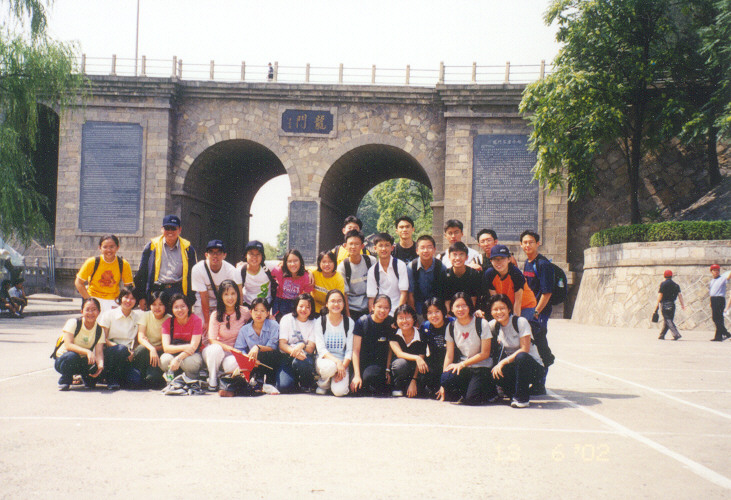
Introduction
Hello, I am Deborah Koh, and I am from Singapore, where about 70% of the population is made up of Chinese people who are descended from Chinese immigrants many decades ago. The majority of the Chinese have a pretty good grasp of both Chinese and English, since the government made English the first language and Chinese the compulsory Mother Tongue for all Chinese.
I study the piano and the traditional Chinese instrument, the erhu. When I was in secondary school, I joined the school’s Chinese Orchestra as my co-curricular activity, and have never regretted doing so, despite the demands that it made of my time. It would not be a far stretch to say that we are possibly one of the best secondary school Chinese Orchestras in my Country, if not THE best. We have clinched the title of Best Secondary School Chinese Orchestra for three times in a row now and make biannual trips to China for performance tours. So far, I have performed in Nanjing, Jiangyin (hometown of Mr. Liu Tian Hua, a famous erhu player) Suzhou, the town of beautiful gardens, and Henan, famed for having the Yellow River flowing through it. The experience was truly wonderful!
The Erhu
The Erhu is a most fantastic instrument. Most people here have the mistaken notion that an erhu produces a sound like “a cat’s wail,” and their ignorance always saddens me.
As for the erhu, it used to be that it wasn’t very well designed and was used only in opera with a range of one octave.
This was until Liu Tianhua[1] came along. With his education in the violin, he further refined and standardized the design of the modern erhu, using the method of shifting the hand downwards to increase the range, also introducing a myriad of different performance techniques.
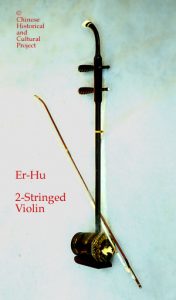
Liu Tianhua revolutionized the erhu, and when he first performed Guang Ming Xing, it was a milestone in erhu history. For the first time ever, people saw the range and potential of an erhu. It’s popularity as a solo instrument surged.
Right now, the modern erhu has a history of about 500 years, but people never forget that it was Liu Tianhua who brought the erhu to where it is today.
Liu Tianhua composed kong shan niao yu and zhu ying yao hong plus a few other pieces. Even after so many years, his pieces still enjoy great popularity. The Erhu is similar in principle to the violin, but wow, the tone is certainly unique.
[1] Liu Tianhua (劉天華 1895–1932) was a Chinese musician and composer best known for his innovative work for the erhu. Liu’s students, such as Jiang Fengzhi and Chen Zhenduo, continued to contribute to the development of the erhu. (Wikipedia)
Tian Shan Sheng Hui (Festival on Mt. Tian)
This is a lively song, a part of the zu guo chu chu shi chun tian or Spring Suite, by [the composer] Gu Guanren, but with a strong tribal flavor to it that makes it very unique among Chinese orchestral pieces. It symbolizes the festival held on Mt. Tian (Mt. Sky) where the Chinese minority tribes congregated and danced the night away. Both fast and slow melodies are woven together into a music that does not lose its ability to make the listener dance along with it.
The pai gu (drums) provide a thunderous introduction, aided by the cymbals, before the whole orchestra enters in C major, two-four time. The orchestra has a whale of a time, and from personal experience, performers get a “high” just from playing this section alone. It is just too infectious to be resisted.
A dazzling solo by the xiaodi (piccolo) is heard, with accompaniment by the plucked-strings, cellos and double basses. The strings then enter in a harmonized repetition of the xiaodi melody. A brief comment about the harmony of the strings. Taken individually, the gaohu, erhu and zhonghu parts sound quite strange. We used to call it the “puke-inducing portion”, in fact. But, when taken as a whole, the harmonized effect is breathtaking. We fell in love with it in the end. The cellos have a great time “singing a duet” with us too. “He wo men dui chang,” my conductor used to say in Chinese.
The liuqins (high pitched plucked strings) then come in with a bright, sprightly representation of the melody before the orchestra enters again with a repeat. This is followed by a two bar transition where the beat changes from two-four time to five-four time. The cellos provide marvellous rhythm, with their pizzicato on the first and fourth beats respectively.
The erhus (violins) enter in A major with a lovely dancing melody, quite a big change from the boisterous atmosphere earlier, but no less sprightly for that. The dizis join them, and then the zhongsuo (saxophone) takes over the solo role, with plucked strings helping it with background melody. The strings enter again, reinforcing the melody. My conductor told us this section was supposed to represent couples dancing. First, the sweet and melodic erhus (tribal maidens) perform, then the deeper and huskier zhongsuo (tribal lads) take over to woo the girls.
The rhythm now changes to three-four time and the key signature changes back to C major. The xiaodi and plucked strings take over center stage again, with a lively variation of the main melody. Then, it is time for the strings to take over with the same melody, followed by the whole orchestra, with suonas being the most prominent. Note the cellos providing a strong pizzicato in the background.
There is a four-bar bridge, with the same melody repeated at different octaves by different instruments. This leads into a wild percussion solo that has to be seen with one’s own eyes to be believed.
The suonas break into song again, with a two-two beat in an A major variation of the main melody. All the while, the strings are playing a running series of notes. Six notes in one beat, to be exact. Since three notes in one beat are termed as triplets, I guess they should be termed as sextuplets? From personal experience, we had a great deal of fun trying to keep up with the strange beat, since this was the first song, we encountered that required sextuplets.
The beat changes to two-four time in A major, then back to two-four in C major again, before the song ends with a note of finality. I really like this song! Most of us had great fun rehearsing and performing it, and I hope that Internet listeners enjoy it too!
About the Composer Gu Guanren (who composed this song)
Gu Guanren [born in 1942] is a contemporary composer from Shanghai. He’s very famous throughout the Chinese orchestra circle for his wonderful pieces and his works are in very great demand. I don’t know much about him, but I do know that he was still writing pieces in the 90s. I absolutely love what he composes. So far, I’ve played “Tian Shan Sheng Hui”, “Jun Ma Ben Chi” and “Ji Guan Yu”, a piece to commemorate Guan Yu, the famous Chinese hero in Romance of the Three Kingdoms. He is the embodiment of bravery and loyalty, according to the Chinese.[1]
Unfortunately, though “Ji Guan Yu” is a great song, I don’t think there are any CDs of it because the piece was commissioned by my orchestra, and we only made taped copies during our concert. No CDs. It’s a really great song. Very sad, noble and steadfast at the same time.
Come to think about it, this is the sad thing about Chinese music. We have all this great music, we play it in concert-houses, but we don’t record it. Arghh! People who don’t get to listen to it are missing out on A LOT.
As a side note, I visited the temple dedicated to Guan Yu when I was touring in China. It’s wonderful. Chinese culture is wonderful.
Gu Guanren has also arranged pieces such as “Tibetan March”, which was originally a Tibetan folksong, and composed Hua Mulan, a really stirring orchestral piece with solo pipa. I have heard it on CD and I absolutely loved it.
About Chinese music now, most of the orchestral pieces composed by famous composers have a theme to them, a storyline, if you will. “Ji Guan Yu” starts off with temple bells, has a fast-paced section showing the heat of battle, and has a segment where the Chinese gong sounds out and the music dies down to signify the moment when Guan Yu died, before returning to the opening bars of temple bells again where the common people are worshipping at his temple, mourning his death.
The music of “Dong Hai” is about a trip out to sea, the storms, and the trip back again. “Hua Mu Lan” describes a girl who 1 dresses as a male to take the place of her ailing father in the army. There are battle sounds and everything. It’s a very long and famous folktale, with lots of plot twists. Maybe one day, if I can find the song, I’ll write a long commentary on it.
There are also pieces like “Chang Di Sui Xiang”, which I also performed before, that tells of the troubles and sorrows that the Yellow River inflicted on the common people during its yearly floods.
In school, we had to watch a video of how the PLA (People’s Liberaton Army) risked life and limb to shore up the banks of the raging river, how the soldiers stood steadfast for hours at a stretch in waist-deep water, working desperately to ensure the people’s safety. The common people are extremely grateful to the PLA for their yearly efforts, and when rehearsing the piece, I could feel the way that the piece was extolling and celebrating the bravery of the PLA.
This then, is the direction that Chinese orchestral music is currently taking. The music is no longer about mere technical virtuosity, no longer about just melodies and chords, but the songs are like musical poems, each one telling a story, a plotline, telling of how the people felt and how they rejoiced or suffered, lived or died.
[1] Guan Yu (160–220), a famous general at the end of the Han Dynasty era (206 BC – 220 AD), was one of the best known historical figures in ancient Chinese history. (China Highlights.com)
About “Tian Shan Sheng Hui” (Festival on Mt. Tian)
This is the original orchestration and the only version of it, as far as I can tell. Granted, other orchestras may have slightly different tempos, and the solo drum and xiaodi portions may have trills and ornaments in different places, due to the flexibility of Chinese music. But on the whole, the piece is usually performed the way the composer wrote it.
Usually, guzheng songs are more traditional than most. Throughout history, the guzheng has always been featured as a popular instrument among scholars. To be regarded as an educated man, a person had to have “qin qi shu hua.” Translated literally, it means “musical instrument, chess, books, drawing”. And the qin referred to is usually the guzheng. As such, the guzheng has a very large repertoire of traditional chinese music.
Instruments like the pipa were developed at a later date, so their repertoire is not as large.
The best thing about Chinese music is that it is usually eminently singable. This is especially so for the main melody, and I’ll find myself humming certain parts when on the road. I don’t know, I find Chinese music to be full of emotion, and I love singing along to it.
For example, the ‘zhu ying yao hong’ part. I love the part where it goes “la so la do la do la so mi so la, do re mi so mi re do la do so la mi”. In Western notation, it would be something like “A G A C A C A G E G A, C D E G E D C A C G A E.”
Zhan Tai Feng (Combating the Typhoon)
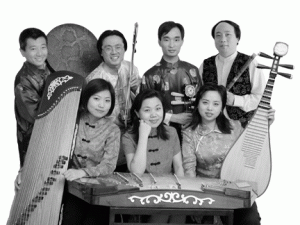
This is a guzheng solo piece composed by Wang Chang Yuan. The guzheng (zither) is an instrument similar in principle to the harp. There are several segments where heavy strumming is involved, a technique that is commonly referred to as sao xian, or “sweeping the strings”. Lots of furious glissando is used too. This is to portray the fury and strength of the typhoon winds. The pentatonic scale (do re mi so la do) is quite evident here, with a melody somewhere in the middle that goes “La do re la, la do re mi, mi re do re mi re mi so la…”
Zhu Ying Yao Hong (Flickering of the Candle Flame)
An erhu solo piece with yangqin (dulcimer) as accompaniment. It was composed by Liu Tianhua in 1932. Unfortunately, he died of scarlet fever that very year.
Kong Shan Niao Yu (Birdcall on an Empty Mountain)
Yet another erhu solo piece with yangqin as accompaniment, also composed by Liu Tianhua. It is very unique in the way that it displays the wonderful ability the erhu has in mimicking birdcalls. The erhu does not have frets in the way a guitar has, nor a fingerboard like a violin. It merely has 2 strings stretched taut in mid-air. This allows an amazing variety of sounds to be produced due to changes in the pressure of depressing the string.
The second half of the song is where the true action starts. When performed live by a virtuoso, it is an amazing sight. The erhu player sweeps from the top of the strings all the way to the bottom of the strings and back up again, with utter confidence that he or she is playing the exact right note, even though there are no frets, and the hand is moving impossibly fast, with the fingers just grazing the strings.
In order to achieve this special effect, the same note is played in swift succession by three different fingers. So, for example, the notes “do do do” would be played by the ring finger, the third finger and then the second finger at super-fast speed, causing a slight blurring of the notes. All these techniques result in squeaks and calls that sound remarkably like that of a bird.
The erhu can also mimic the sound of neighing horses as well as a snowstorm quite convincingly.
Bu Bu Gao (Stepping Higher)
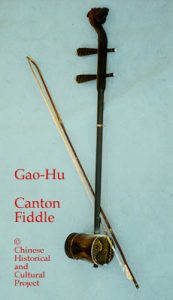
This is a gaohu solo piece, with a chamber orchestra as accompaniment. The melody is bright and lively, which is brought out to perfection by the unique timbre of the gaohu. On the whole, this is a very toe-tapping song, from Guangdong (Canton) province.
When I first heard “Ping Hu Qiu Yue”, which is the “autumn moon over a quiet lake” song, I was trying to decide whether the solo instrument was a banhu or a gaohu. The bright timbre of the instrument was a very obvious indicator to me that it could not have been an erhu.
Whilst on a website about Chinese instruments, four popular gaohu pieces were mentioned. “Bu Bu Gao” and “Ping Hu Qiu Yue” were two of them. That clinched it for me, and when I came across an mp3 of “Bu Bu Gao”, I was ecstatic.
If you listen to these two pieces, then compare them with erhu pieces like “Kong Shan Niao Yu”, you will know what I mean when I say that the tone is unmistakable. Lots of hua yin is used in this song, where for example, to play the note D, the player will start from the note C and slide very quickly to note D to provide a slight, sharp transition. Hua yin gives the music a bouncy flavor, and is a technique often present in Guangdong (Cantonese) music.
Nan Ni Wan (Bend of the River Nan Ni)
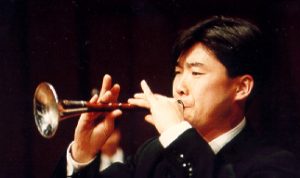
This is a folk song, played by the erhu. A chamber orchestra acts as accompaniment. It’s very similar in mood in “Bu Bu Gao”, except that it is slightly less playful. Note the repeated use of the suona in the middle, which should not be mistaken for a gaohu, despite the fact that both of them have very bright tones.
Shan Dan Dan Kai Hua Hong Yan Yan (Red Flower)
This is a solo guzheng piece. It is a Shanbei folksong. The melody is simple, but it is very lovely.
I greatly encourage all those interested to take a look at the video of the song. Nothing can beat watching a live performance, so please see the performer “in the flesh,” so to speak.
Selected Songs from Hong Lou Meng
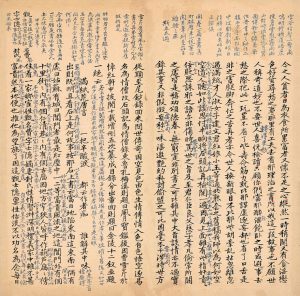
These are selected songs from the soundtrack of a TV adaptation of the famous Chinese classic [novel] “Hong Lou Meng”, or “A Dream of Red Mansions”, as it is more commonly referred to in the West. It was written by Wang Liping. This performance was recorded live by the famed singer Zheng Xulan at Victoria Concert Hall in Singapore with City Chinese Orchestra as the accompaniment.
The reason I chose to feature these pieces, aside from the beautiful and poignant melodies, was because Zheng Xulan is a classically trained Chinese singer with a lovely voice. Hopefully these songs will allow listeners to have a taste of what Chinese opera singers sound like.
The pieces were recorded live though, so please forgive the slight errors present. Nevertheless, it is of reasonable quality, and is no less beautiful despite the lack of a proper studio.
Hong Lou Meng Xu Qu (A Dream of Red Mansions)
This is an orchestral piece with only some wordless singing in the beginning. It is quietly sad at first, but soon works its way to a lament involving the entire orchestra.
Zi Ling Zhou Ge (Song of Zi Ling Province)
Zheng Xulan shows off the power of her voice here in the first fully vocal song of the CD. Not my favorite song, but it is still pretty good.
Hong Dou Qu (Red Bean Song)
The singer’s marvellous voice is shown off to great perfection in this emotional song, with the support of the erhu underpinning the melody.
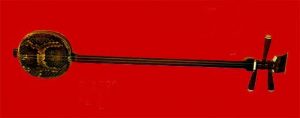
This song features mainly the erhus, with the occasional entrance of the sanxian, or shamisen as it is known in Japan. The melody is playful and flowingly beautiful at the same time. I recommend this for anyone who loves the erhu.
Tan Xiang Ling (I don’t quite know how to translate this one)
The erhu makes a few brief appearances here, and Zheng Xulan works her usual magic again.

Shang Yuan Jie (Shang Yuan Festival)
The suona is the main performer in the introduction, along with the cymbals and drums. It’s very reminiscent of a Chinese wedding. Then the banhu (a kind of fiddle normally used in opera) enters, along with the muyu (which is the wooden fish like the ones that monks use). The plucked strings also make a brief appearance. There is no vocal part here, but it’s still an interesting addition, nonetheless.
